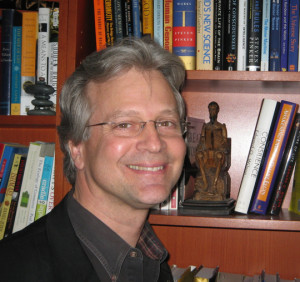Drivers of Change: Part II
Aug 8 2013
Sandy Wiggins is a renowned sustainability leader. Here, he shares how green building became a worldwide movement.
What was the tipping point in which green building became a “hot” industry? When did it become affordable enough for mainstream buy-in?
The tipping point came in early in 2006. Suddenly, green building seemed to be on the tip of everyone’s tongue. In particular, I noticed architectural firms that had never taken an interest were starting to actively seek out green building projects to gain experience. I was also doing a lot of public speaking, and I would always ask the audience to which I was speaking to raise their hands if they had heard of LEED. Almost overnight, the response to that question went from maybe ten percent of each audience to well north of fifty percent.
It is true that a decade ago there were few manufacturers who were interested in providing green products and that the products that were available commanded a cost premium. That’s completely changed. There isn’t a single building material manufacturer that hasn’t changed its product offerings to meet the green demand, which of course has brought down prices. It’s also true that there was a dearth of integrative design expertise in the design community, which has led many beginners to spend a lot of unnecessary money on their projects. That’s changed more slowly because it requires a paradigm shift by the design community, but it is catching up to the materials industry. However, asking about when green building became affordable to the mainstream may not be the right question. A better question might be, “When did the mainstream begin to realize that building green makes better economic sense than business-as-usual?”
What has happened over the course of the past decade is that general awareness about the long-term and externalized costs of not building green have become widely understood and, for various reasons, that has motivated owners and developers to take the plunge even when there might be a first cost premium. Consumer demand has also factored heavily into that shift, as has the growing body of data that documents the real performance and health benefits for human beings that occupy green buildings. I would say that, because of all of these factors, by the end of 2007 the cost conversation largely disappeared as the principle decision-making criteria about whether to build green.
Has green building had any effect on healing the broader economy? If not yet, is there potential?
I would say yes. The building industry is enormous and touches every other industry and every individual. Because of that, green building has become part of the parlance of almost everyone in the developed world. It has raised awareness globally about environmental sustainability and that awareness has bled over into the many other conversations in many other industries. Businesses, of course, are populated by people, and that awareness also then affects how those people act in other areas of their life. It was my own growth in awareness through green building that led me to see communities and local economies as critical domains for implementing change and the financial industry as the “pig in the pipe.”
Are there any lessons learned that could be applicable to other environmental/sustainability movements?
I believe there are opportunities for movement building that can be discerned through examination of those key drivers that catalyzed and accelerated green building. The most important of these is meaning. There is no more powerful force on earth than a person with a sense of purpose. If we can find ways to elicit people’s most deeply held values (they tend to be the same for most of us by the way), connect those values to the global issues facing the human family and then empower them to act on those values in their daily lives, movements happen. The fundamental increment for change is the individual human decision.
During his three-decade career  in the real estate industry, Sandy Wiggins has led the development and construction of projects totaling over one billion dollars. He is Past Chair of the U.S. Green Building Council, Founding Chair of the Green Building Certification Institute, and co-author of LEED for Neighborhood Development. He serves as a Senior Advisor to RSF Social Finance and is a Director of RSF’s Social Investment Fund.
in the real estate industry, Sandy Wiggins has led the development and construction of projects totaling over one billion dollars. He is Past Chair of the U.S. Green Building Council, Founding Chair of the Green Building Certification Institute, and co-author of LEED for Neighborhood Development. He serves as a Senior Advisor to RSF Social Finance and is a Director of RSF’s Social Investment Fund.